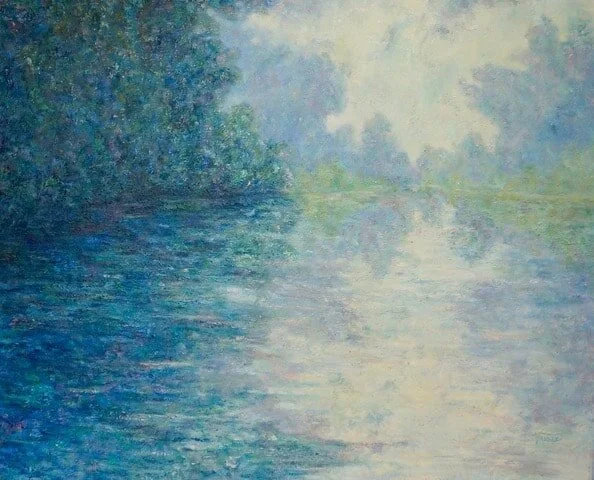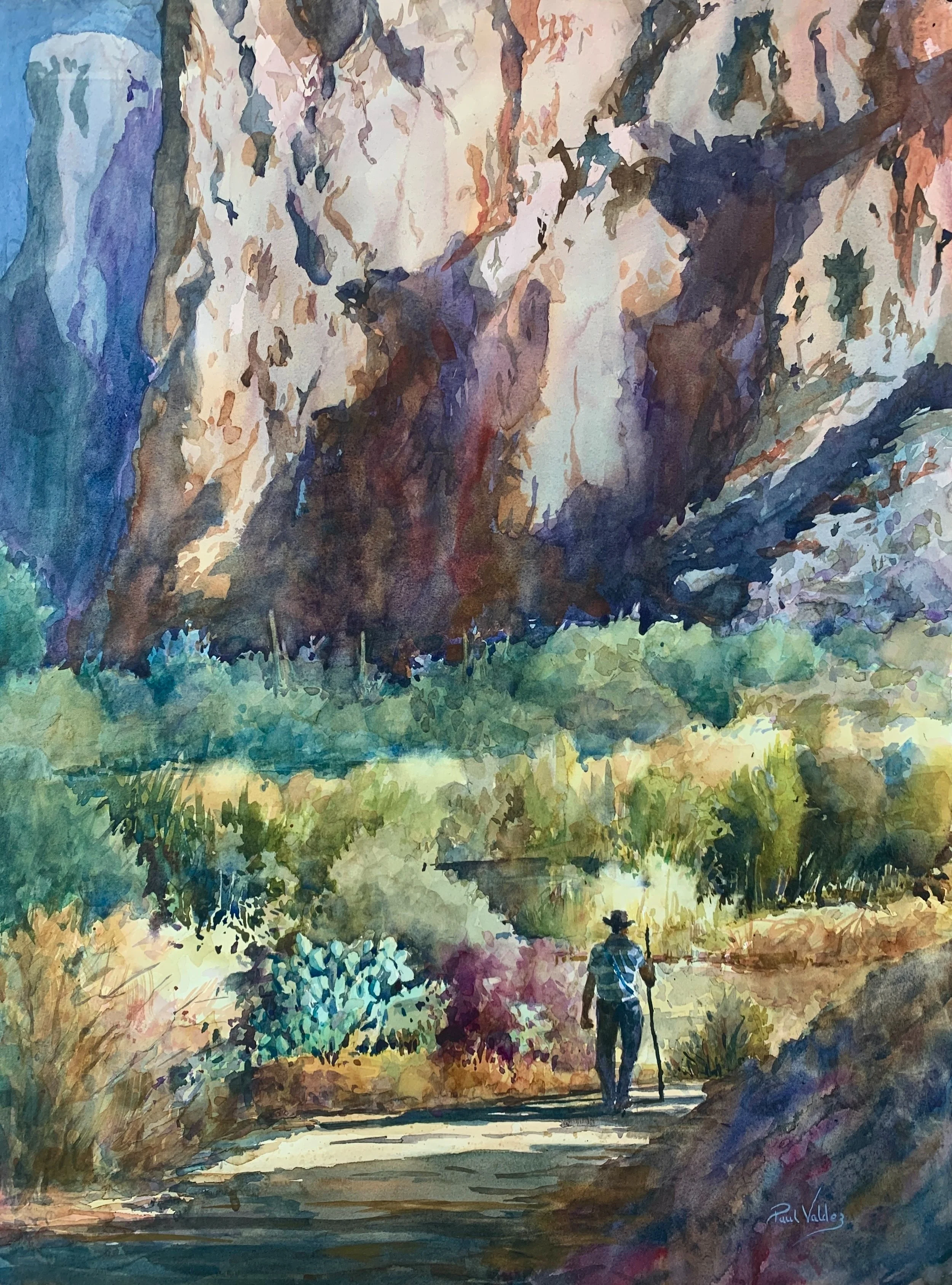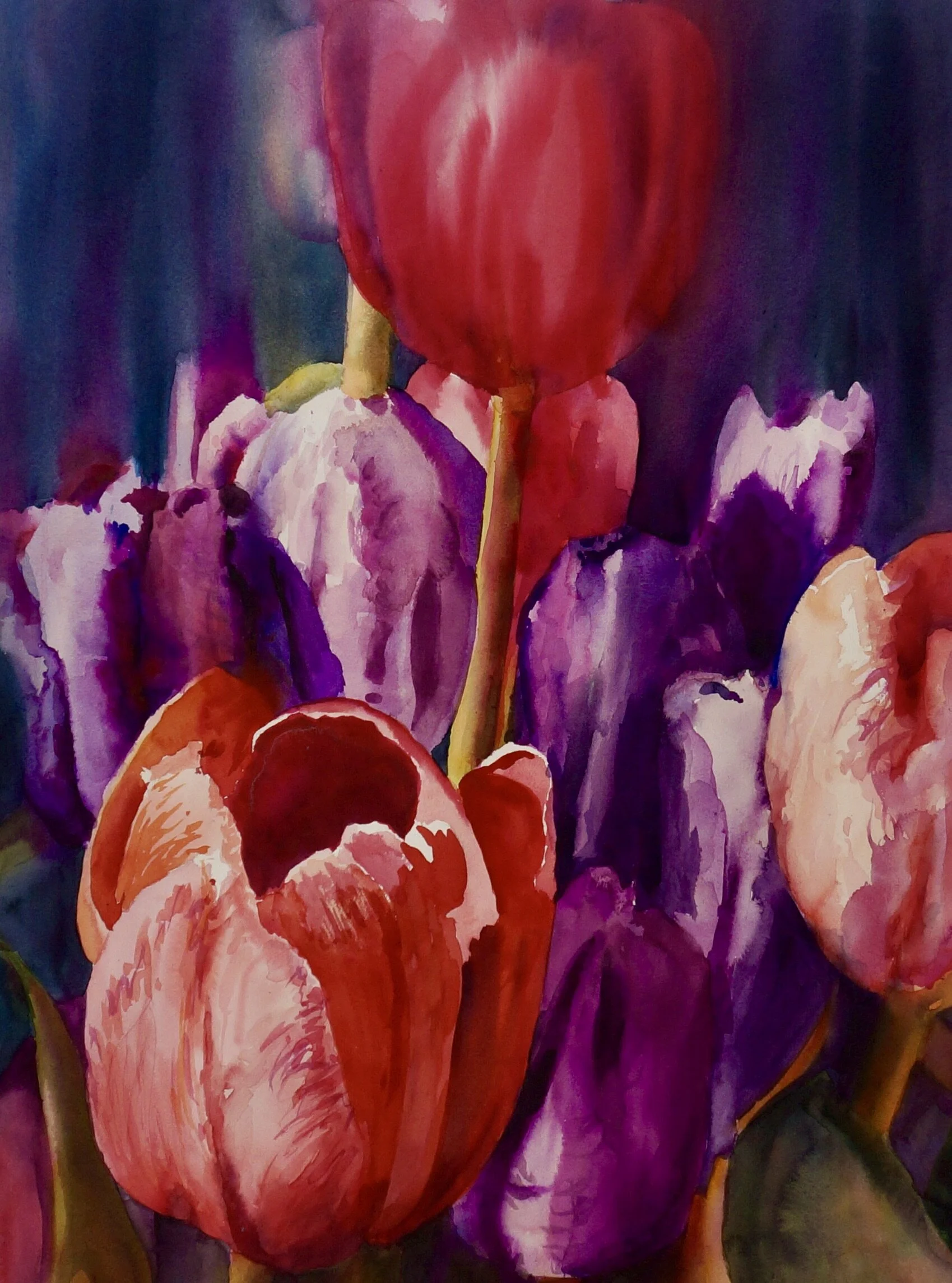Part 12: Colors + Transparency | Do Not Be Afraid of Watercolor Series
Good morning. My name is Paul Valdez. And I welcome you to the Do Not Be Afraid of Watercolor series. I've done watercolors for over 30 years and I've kind of had to learn the hard way.
This video series is designed to help make watercolor easier, more fun, more productive as you become more comfortable with watercolor.
Colors:
Holbein Cad Yellow, Orange and Red
Windsor Newton Blue (Green Shade)
Windsor Newton Permanent Rose
Holbein Bright Rose
Holbein Bright Violet
Holbein Lemon Yellow
Holbein Veridian
Holbein Aqua Green
Holbein Cobalt blue
Holbein Neutral Tint
Holbein Ultramarine Blue
Holbein Burnt Sienna
Holbein Yellow Ochre
Materials:
Arches 140 lbs, cold press paper
Bulldog Clips (4)
Light weight board to paint on.
Water container, Sponge, Paper Towels, Pencil and Kneaded eraser.
Video Transcription:
Good morning, and welcome. My name is Paul Valdez, and thank you for joining me on the Do Not Be Afraid of Watercolor series. Hoping this series is useful to you. So you can become a more confident watercolor painter.
Today's video is about transparent colors. Ooo we are getting into colors!
Colors are generally classified as transparent, semi-opaque, and opaque. All this can again, be subdivided and there are semi opaque colors that I use as a transparent wash. So I know this can be just a little bit confusing. We will bring this all up again in subsequent videos. And the colors that I will be talking about today are the ones that I use on my palette or have used recently, in the past.
My transparent, triad are permanent rose, transparent yellow and Windsor Newton, bluish. I'm sorry greenish shade. So when you see the term Windsor Newton, basically, that would be just like anybody else's. So Windsor Newton blue is like a phthalo blue.
And this is a greenish shade. These are my favorites to use transparently. Let me just go through the colors that I use frequently clean off my brush. So I have transparent, yellow, permanent Rose, Windsor, Newton, blue, greenish shade. This is Holbein. So, all these are Holbein unless you see me? Say Windsor Newton, whole buying a bright Rose, bright Violet, and then lemon yellow, yellow.
Back again to my holbein's. And this is a windsor Newton, actually aqua green and cobalt blue and a neutral tint. And I know you're like, oh, neutral tints like a black. It's actually the most transparent of all the dark colors. And what I have done for you here is taken my brush and with a clean bit of water and just gone through and a couple swipes. And then I take a piece off I wipe that through just to show a couple of things.
First of all, how much of it will come off with just a couple of swipes of water and a wipe and which ones are more transparent, almost to the white once you take it off or transparent with a stain, once you try to take it off. Obviously the lemon yellow that almost gets down to white, but that is fairly light, but you'll notice which color stainless cobalt blue got pretty light. Neutral tint got pretty light.
This phthalo blue forget about it. You're never going to get close to White. Permanent Rose, neither, transparent yellow. So, you know, you got to be aware of which colors stain more. So when you put your wash on, if you feel like you need to wipe some off, you're never going to get back to this white when you use Windsor Newton blue.
So this is my, group of colors that I use and if you happen to be one of those artists that use alizarin Crimson, like I did for many years. It's a staining color. It's a very staining color actually more staining than permanent Rose and I've also heard say that alizarin Crimson isn't a permanent color. And of course, this is called whoops permanent Rose. So that's why I switched to permanent Rose. I really like it and I enjoy it. I like its transparency.
So what I'm going to do is I'm just going to go through real quick these colors that I used and just kind of show you. Let's start with a lemon yellow just to play and I'm going to go lemon yellow here. And then I'm just going to go make a line, straight across lemon yellow to transparent yellow. Just so you can kind of see the differences. So here's a transparent yellow. It has a little bit more grain to that.
Here is a Viridian. And I'm just going over the color before just a little bit. So, that's a Veridian and these are fairly light. This is the aqua green. Okay, this is the Windsor Newton. Windsor Newton, blue. Okay, then this is the cobalt blue.
Now, I'm going to go to my reds. This is the permanent rose. This is my bright rose. See the difference. And this is my bright violet. Then I'm going to cap all that out with a little bit of neutral tint.
That kind of gives you an idea of the difference and how the colors kind of mix and why I use these colors a whole lot. Because I loved the transitions that they make, you don't see any mud anywhere in here, in this neutral tint, gives this beautiful bright violet, a nice darkness to it. Really nice.
Well again, I hope this video helped you just a little bit. If you would, please like and share with your friends. I appreciate you. And until next time see ya.













